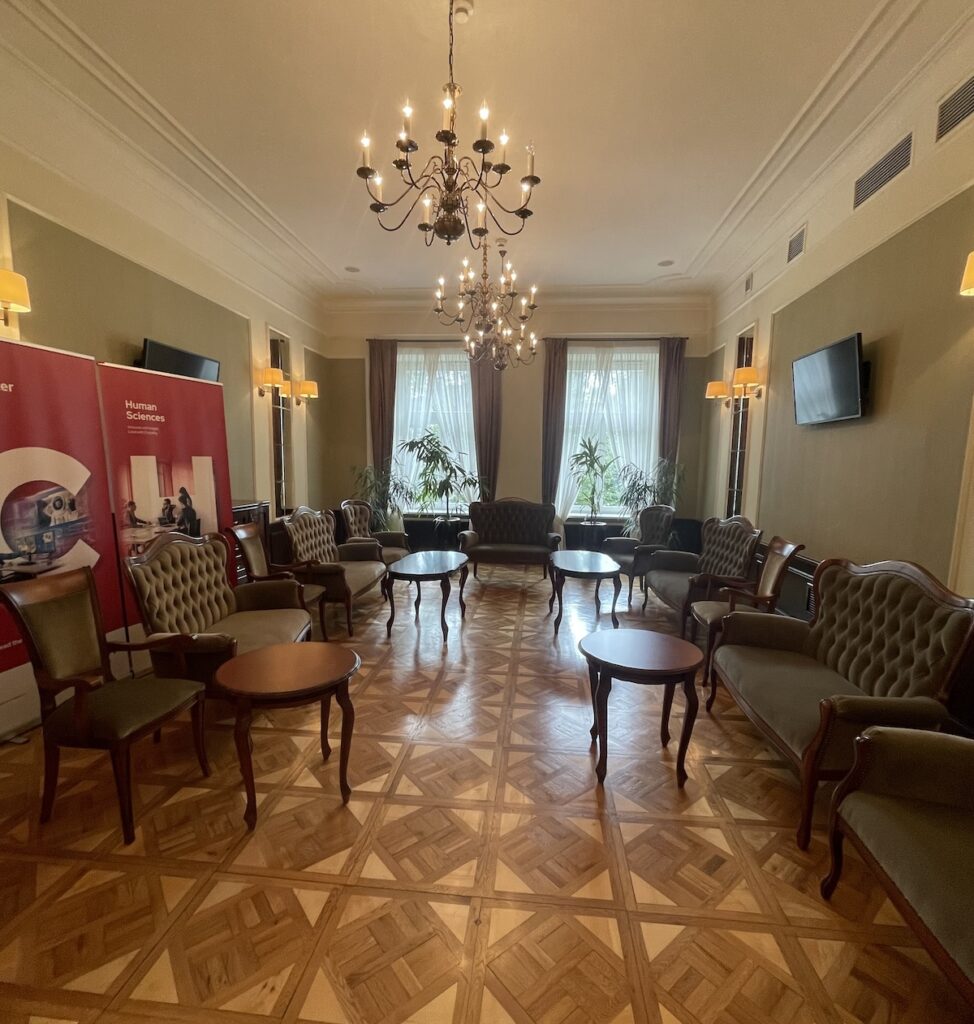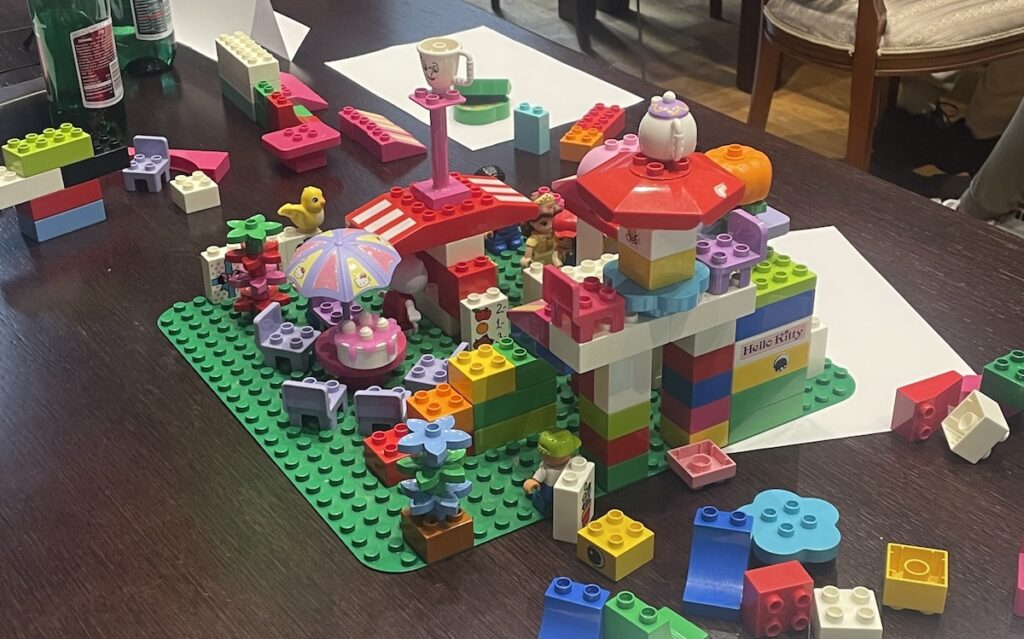Starting my MBA Tech journey in 2024 at AGH University has been an exciting and insightful experience. One thing I noticed when I first began researching MBA programs was the lack of practical, real-life insights shared by students. With this in mind, I decided to start this blog, not only to document my journey but also to provide useful, hands-on reflections for others considering this path. My goal is to share what I’ve learned beyond the standard curriculum and offer practical takeaways that I hope will be helpful to anyone navigating their own MBA or leadership journey.

One of the most impactful courses so far has been Psychology of Management, which set the tone for what I hope will be a transformative experience. Here, I’ll share my reflections based on this first lecture, offering insights into the human side of leadership and management.
Leadership Starts with Self-Reflection
One of the most powerful lessons from the very first class was the idea from Prof. Murat Çolak: psychology acts like a mirror. Management isn’t only about directing others; it requires a deep understanding of your own behaviors and mindset. Before we can manage others effectively, we must learn to manage ourselves. This lesson hit home for me, especially when we discussed how burnout, toxic coworkers, and personal stress can impact our leadership abilities.
There was a strong focus on recognizing and addressing persistent toxicity in the workplace. Toxic environments don’t just hurt productivity—they can lead to personal burnout and disengagement. I found this particularly relevant, as it underscored the importance of setting boundaries and maintaining a healthy balance as a leader. We were encouraged to think of leadership as creating invisible borders around yourself and your team. These borders aren’t barriers to communication but essential boundaries that help manage relationships and expectations effectively.
The Power of Body Language
Another key takeaway from the lecture was the importance of non-verbal communication. Body language plays a significant role in how we are perceived as leaders. In our first session, we practiced using body language to engage with our audience during presentations. I realized how often I had overlooked its importance. Small adjustments—like making eye contact, standing with confidence, or using hand gestures—can dramatically change how your message is received.
During one of the Sunday morning exercises, we were taught the impact of turning your back on the audience. Something as simple as that can instantly disconnect you from the people you’re speaking to. On the other hand, even a small gesture like a nod or deliberate hand movement can re-engage your audience. It’s true that „there’s no small yes in life”—every movement and gesture has meaning, and as leaders, it’s essential to harness these subtle cues to enhance communication.
Building Trust Through Consistent Feedback
One of the core themes of the lecture was the relationship between trust and feedback. Keeping your words was a phrase that echoed throughout the discussion. It’s a simple but powerful reminder that leadership is built on trust, and the fastest way to erode that trust is by making promises you don’t keep. Consistency, both in action and communication, is critical. As we talked about feedback, it became clear that the quality of the feedback we provide can either motivate or demoralize our teams.
I found the concept of generalized feedback particularly interesting. When feedback is too vague, it fails to give the person any concrete direction for improvement. This resonated with me, especially in today’s diverse workplace, where each individual might interpret feedback differently based on their cultural and personal backgrounds. We were encouraged to ensure that feedback is specific and actionable, tailored to help each team member grow.
Managing Stress: Practical Techniques for Leaders
One of the most practical parts of the lecture was the focus on managing stress—both our own and that of our teams. We learned several stress-management techniques, from using deep breathing exercises to focusing on slow starts (especially in my case) to reduce tension during presentations. One tip that stood out to me was using a small gadget, like a pen or a pointer, during presentations to keep your hands occupied and manage stress. I found that these little tricks not only help you regain control of your nerves but also keep your audience engaged.
The emphasis on pacing was critical. I learned that starting slow and gradually building momentum can help manage anxiety, especially during high-pressure moments like public speaking. We were advised to avoid rushing (aka Speedy Gonzales) through presentations, as this only increases stress and decreases the quality of the delivery. Instead, taking a moment to breathe and focus can make all the difference in how confident and composed you appear.
The Complexity of Cultural Diversity
Another significant part of the lecture focused on managing cultural diversity within teams. In today’s global workplace, understanding the unique perspectives and values of each team member is vital to fostering a productive and inclusive environment. One of the most insightful exercises was discussing real-world cases of managing diverse teams, including the challenges of leading in a remote work environment.
We explored how to create a sense of belonging for team members who may feel isolated, particularly in a virtual setting. Recognizing individual contributions and valuing their unique strengths is crucial. Thanks to Google Engineer Director Magdalena Rabiej we had an opportunity to discuss the Belbin Team Roles to match tasks with people’s strengths. Every team member usually plays 2-3 roles, and understanding these can significantly improve team dynamics. However, it’s essential to avoid giving tasks that directly oppose someone’s natural role, as this can lead to frustration and disengagement. The Lego-zoo exercise accurately showed how people react in each of the Belbin roles.

I found it especially useful when we talked about the importance of 1-on-1 interactions. Sometimes, the best way to connect with your team is through informal moments, like going for a walk or having a casual chat. This helps build stronger, more personal connections, which in turn creates a more cohesive and motivated team.
Final Thoughts: Psychology at the Heart of Leadership
As I reflect on this first lecture of the MBA Tech program, I’m struck by how much the Psychology of Management has already shifted my perspective on leadership. It’s not just the content of the course that has made an impact, but also the diverse group of fellow students. The insights and experiences they bring to the table have enriched the learning experience, offering new perspectives that I hadn’t considered before. Engaging with such a dynamic group of people has made me realize the value of shared experiences in shaping our understanding of leadership.
This course is not just about mastering technical skills or management theories. It’s about learning how to navigate human relationships, motivate teams, and build a healthy, productive culture. I’m eager to continue this journey, learning from both the course content and my peers, and to apply these lessons to real-world challenges as I move forward in my MBA program.
Have you experienced similar insights in your leadership journey? I’d love to hear your thoughts or any lessons you’ve learned along the way!




![How to configure a test mail server with the Docker? – Cooking notes [EN]](https://rafalstepien.com/wp-content/uploads/2018/07/docker_tests-100x70.png)

